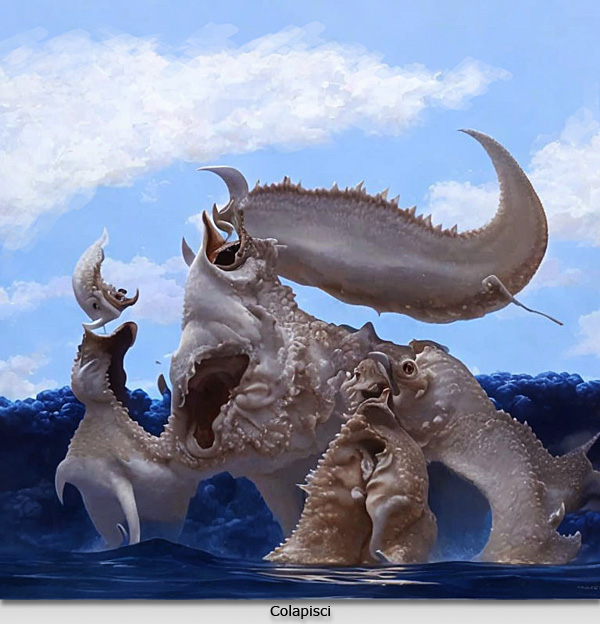|
|
|
L'OME MARÍN è un mito tipico
delle zone costiere. È un essere umano, orribile, spettinato, nudo, che
rapina e aggredisce le ragazze, appende fuochi nei pagliai, ecc. Alcuni
folcloristi lo collegano a miti medievali, come quello della "Cola-pesce"
o quello successivo del "Pesce-uomo di Liérganes", apparso
dentro un pesce tre anni dopo essere scomparso in
mare. In realtà, è un mito molto più antico ed è stato
riattualizzato, a causa della paura ancestrale del mare nelle
Asturie, dai conquistatori romani, dalle invasioni normanne, ecc. |
|
|
EL "OME MARÍN" es un mito propio de
zonas costeras. Es un ser humano, horrible, desgreñado, desnudo, que roba y ataca a las
mozas, hace fuegos en pajares, etc. Algunos folkloristas lo vinculan a mitos medievales ,
como el de "Cola-pesce" o el posterior del "Hombre-pez
de Liérganes", que apareció dentro de un pez tres años después de
desaparecer en el mar.
En
el occidente también se le llama "Repunto", porque es la
personificación de la pleamar. |
THE "OME MARIN" It is a myth coming from cost areas. It is a horrible-naked tangled-haired man, who used to attack and steal young beautiful ladies, start fires etc. Some folklorist associate him to Middle Ages myths, such as Cola-pesce or the more recent Man-Fish from Liéganes, who appeared inside a fish three years after disappearing in the sea. As a matter of fact, it is a very ancient myth, updated because of the ancestral fear Asturians feel for their sea. It is worth mentioning that Roman conquerors as well as Norman invaders reached the land by sea. In Western-Asturias, they also call him Repunto (high tide) because it is the humanisation of the high tide. It is believed in Tineo that there was one who came up from the mare (sea) of Luarca on stormy days, attacking young ladies and killing livestock, according to Jesús E. Casariego. |
|
Servando Fernández Méndez Presidente de la Asociación de "Amigos de la Historia" de Puerto de Vega www.epatineo.com |
|
|
|
|


